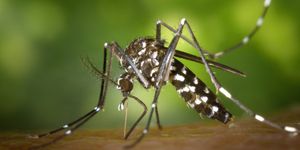RNA Found on the Surface of Human Cells
The surface of a cell carries many features to help it carry out its functions, communicate with other cells, gather information about its environment, and more, as illustrated in the video below. Scientists have now found that a molecule thought to be involved primarily in the regulation of genes and the production of proteins, RNA, can also be found on the surface of human cells. These RNAs have been termed membrane-associated extracellular RNA (maxRNA), and they are present on normal cells, suggesting that RNA has even more functions than we realized. The findings have been reported in Genome Biology.
"The cell's surface is to a cell like the face is to a person," said Sheng Zhong, a bioengineering professor at the University of California (UC) San Diego Jacobs School of Engineering and corresponding study author. "It is the most important part for recognizing what type of cell it is, for example, a good actor like a T cell or a bad actor like a tumor cell, and it aids in communication and interactions."
While we know the human genome generates RNA so that the cell can use it to produce proteins, and that some RNAs from the human genome are capable of regulating other genes, it was thought that in most cases, cells with intact membranes did not have RNAs on their surface. This work shows we have more to learn.
"This discovery expands our ability to interpret the human genome because we now know a portion of the human genome may also regulate how a cell presents itself and interacts with other cells through the production of maxRNA," said the first study author Norman Huang, a bioengineering graduate student at UC San Diego.
This work may help researchers create better drugs or therapeutics strategies for disease treatment. MaxRNA is easy to access; it sits on the cell's surface, so it could be targeted more easily than the RNA that's inside of cells. Antisense oligonucleotides are complementary sequences that can bind to RNA molecules and inactive them, for example.
The researchers developed nanotechnology called Surface-seq that can scan for RNA on the surfaces of mouse or human cells. The cell membrane can be extracted and modeled around polymer cores to generate nanosponges, where the cell membrane retains its orientation, and the surface molecules remain facing outwards. Intracellular contents can be removed, leaving only the RNA that is membrane-associated. This maxRNA was isolated and characterized in this way by the investigators to create a Surface-seq library.
Now the scientists want to learn more about how maxRNA is moved to the cell surface and how it may be contributing to various cellular processes.
Sources: AAAS/Eurekalert! via University of California, San Diego, Genome Biology









